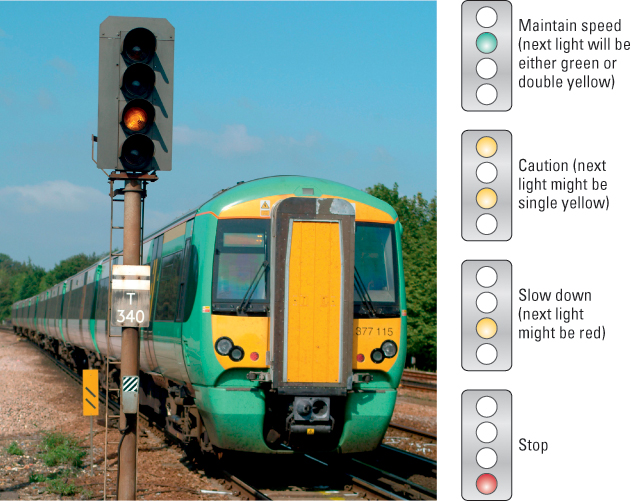
Figure 8.15 Conjoined features make detection harder Shown here are the light signals used along railroad tracks in the United Kingdom to tell drivers how to proceed. The “slow down” signal is critical, because if a driver misses it there will be insufficient time to come to a full stop when the “stop” signal becomes visible. According to Treisman’s theory, however, this signal should be the most difficult to detect, because it is the only signal that is distinguished from the others by a conjoining of two elementary features (color and number) rather than by a single feature. To identify the “slow down” signal as distinct from the others, you have to see that there is only one light and that it is yellow. In contrast, the green and red signals are uniquely defined by color alone (no other signal is green or red), and the double-yellow signal is uniquely defined by number alone (no other signal involves illumination of two lights). In an experiment, John Groeger and his colleagues (2005) showed that, indeed, research subjects who had practice identifying the signals were significantly slower at identifying the single-yellow (“slow down”) signal than any of the others. According to Groeger, a redesign of the UK railroad signal system could save lives, as accidents do sometimes occur because train drivers misperceive the single-yellow signal.
© Alvey & Towers Picture Library/Alamy